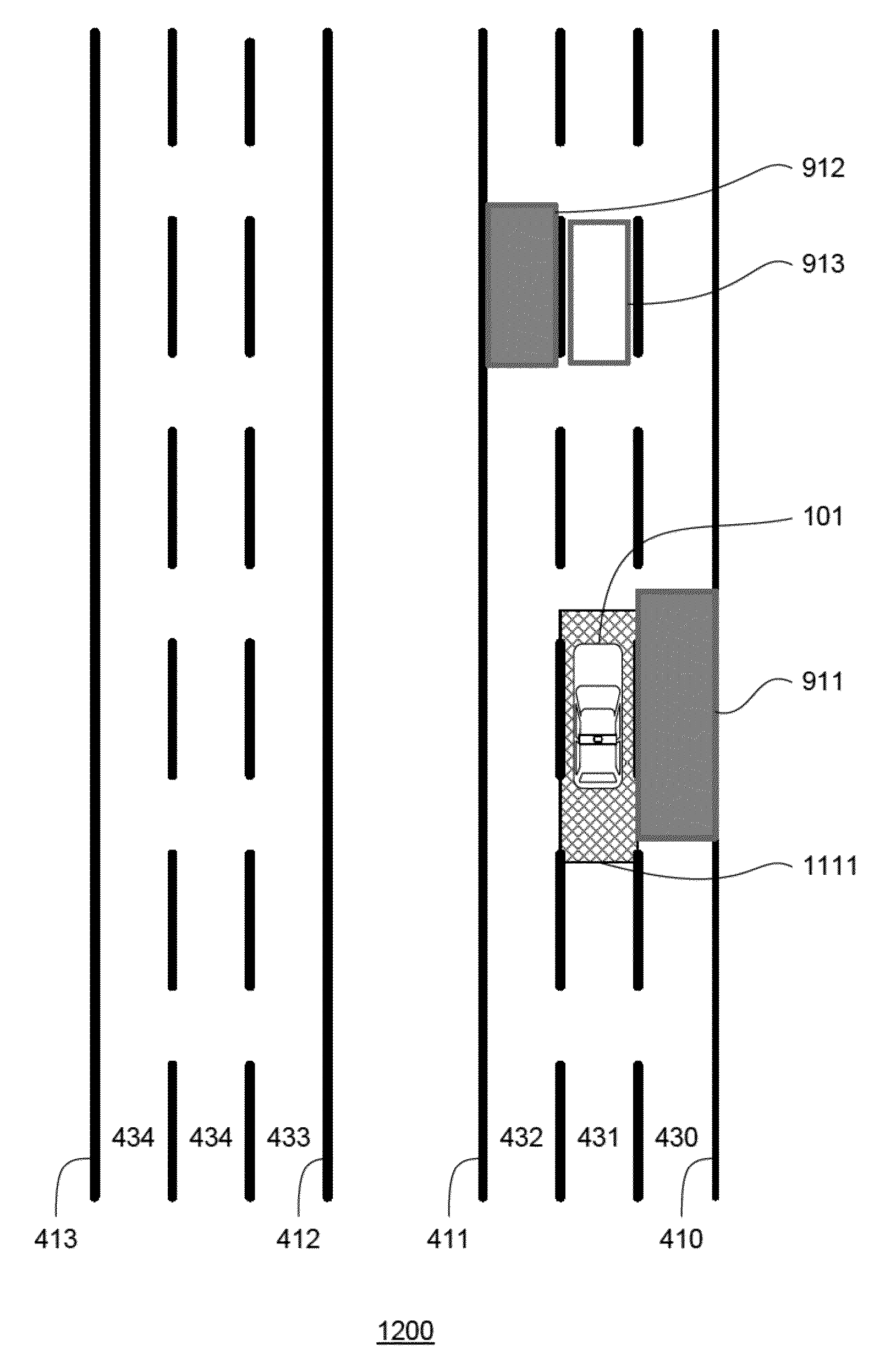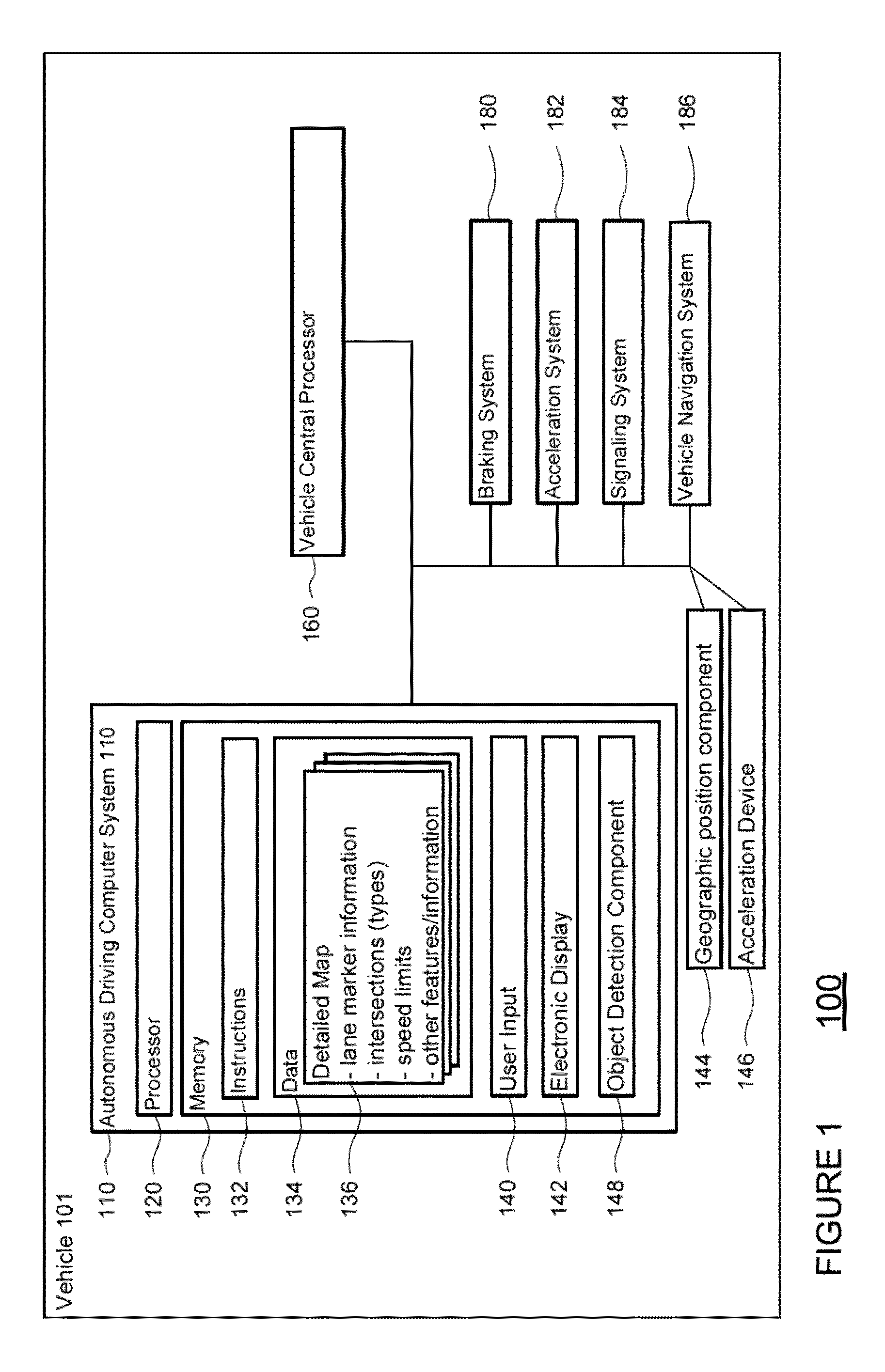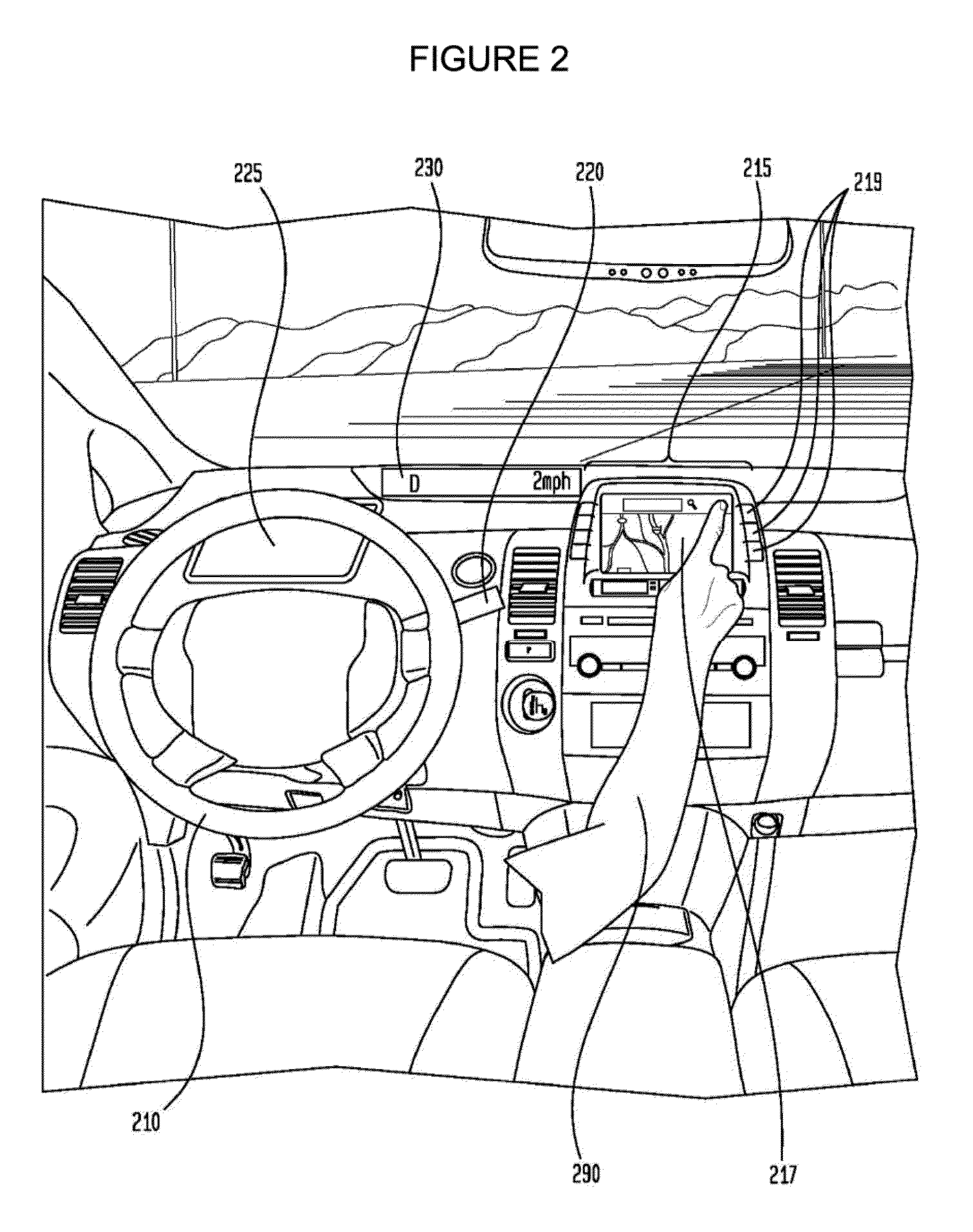Avoiding blind spots of other vehicles
a technology for avoiding blind spots and other vehicles, applied in the direction of vehicle position/course/altitude control, process and machine control, instruments, etc., can solve problems such as uncomfortable for drivers or passengers
- Summary
- Abstract
- Description
- Claims
- Application Information
AI Technical Summary
Benefits of technology
Problems solved by technology
Method used
Image
Examples
Embodiment Construction
[0029]In one aspect of the disclosure, an autonomous (or semiautonomous) vehicle may be maneuvered along a roadway collecting sensor data from the vehicle's environment. The sensor data may be used to detect objects in the roadway. A set of objects that are relevant for blind spot detection may be identified from the detected objects. For each identified object of the set of identified objects, a blind spot area may be determined. This blind spot area may be based on the estimated characteristics of the object from the sensor data, such as the size, shape, location, type, etc.
[0030]The future locations of the set of identified objects and the vehicle may be predicted. Using the predicted future locations, whether the vehicle would drive in any of the determined blind spots may be determined. Driving in the determined blind spot may involve determining whether the vehicle would pass through all or a portion of the blind spot area more than some maximum or threshold period of time. Wh...
PUM
 Login to View More
Login to View More Abstract
Description
Claims
Application Information
 Login to View More
Login to View More - R&D
- Intellectual Property
- Life Sciences
- Materials
- Tech Scout
- Unparalleled Data Quality
- Higher Quality Content
- 60% Fewer Hallucinations
Browse by: Latest US Patents, China's latest patents, Technical Efficacy Thesaurus, Application Domain, Technology Topic, Popular Technical Reports.
© 2025 PatSnap. All rights reserved.Legal|Privacy policy|Modern Slavery Act Transparency Statement|Sitemap|About US| Contact US: help@patsnap.com



